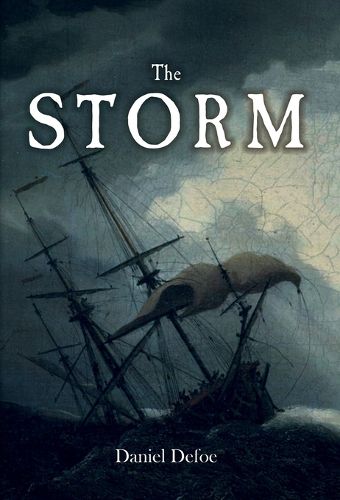Readings Newsletter
Become a Readings Member to make your shopping experience even easier.
Sign in or sign up for free!
You’re not far away from qualifying for FREE standard shipping within Australia
You’ve qualified for FREE standard shipping within Australia
The cart is loading…






This title is printed to order. This book may have been self-published. If so, we cannot guarantee the quality of the content. In the main most books will have gone through the editing process however some may not. We therefore suggest that you be aware of this before ordering this book. If in doubt check either the author or publisher’s details as we are unable to accept any returns unless they are faulty. Please contact us if you have any questions.
In November 1703, a tempest of unparalleled ferocity descended upon the British Isles, etching its calamitous imprint upon both land and memory, with winds later estimated to have reached up to 140 mph (225 km/h), equivalent to a Category 2 hurricane in modern terms. The devastation swept through homes, churches, and naval vessels, with the loss of numerous ships and cargo, resulting in 8,000 deaths and material losses far surpassing the Great Storm of 1987. Over the past three hundred years, there has not been a storm in Britain approximating this magnitude. Defoe's narrative, written during one of the author's bleakest moments, having previously known bankruptcy and imprisonment for seditious writings, draws upon over sixty letters from individuals scattered across the storm-ravaged landscape, weaving their homely voices into a vivid tapestry of personal testimony and observation. From the anguished account of Elizabeth Luck in Tunbridge Wells, who beheld hundreds of trees felled and a church steeple sundered, to the harrowing tale of Thomas Powell in Deal, whose altruism amidst maritime despair led to the salvation of two hundred souls, Defoe encapsulates the storm's indiscriminate fury. Recognised at the time as a pioneering work of journalism and scientific reporting, The Storm remains both a historical artifact and a literary milestone, offering a disaster narrative as compelling today as it was when first published. The present edition makes this classic text available in a large, easy-to-read font, with ornamental drop caps, editorial footnotes, and a full index, making it both a tool and an adornment for the reader's personal library.
$9.00 standard shipping within Australia
FREE standard shipping within Australia for orders over $100.00
Express & International shipping calculated at checkout
This title is printed to order. This book may have been self-published. If so, we cannot guarantee the quality of the content. In the main most books will have gone through the editing process however some may not. We therefore suggest that you be aware of this before ordering this book. If in doubt check either the author or publisher’s details as we are unable to accept any returns unless they are faulty. Please contact us if you have any questions.
In November 1703, a tempest of unparalleled ferocity descended upon the British Isles, etching its calamitous imprint upon both land and memory, with winds later estimated to have reached up to 140 mph (225 km/h), equivalent to a Category 2 hurricane in modern terms. The devastation swept through homes, churches, and naval vessels, with the loss of numerous ships and cargo, resulting in 8,000 deaths and material losses far surpassing the Great Storm of 1987. Over the past three hundred years, there has not been a storm in Britain approximating this magnitude. Defoe's narrative, written during one of the author's bleakest moments, having previously known bankruptcy and imprisonment for seditious writings, draws upon over sixty letters from individuals scattered across the storm-ravaged landscape, weaving their homely voices into a vivid tapestry of personal testimony and observation. From the anguished account of Elizabeth Luck in Tunbridge Wells, who beheld hundreds of trees felled and a church steeple sundered, to the harrowing tale of Thomas Powell in Deal, whose altruism amidst maritime despair led to the salvation of two hundred souls, Defoe encapsulates the storm's indiscriminate fury. Recognised at the time as a pioneering work of journalism and scientific reporting, The Storm remains both a historical artifact and a literary milestone, offering a disaster narrative as compelling today as it was when first published. The present edition makes this classic text available in a large, easy-to-read font, with ornamental drop caps, editorial footnotes, and a full index, making it both a tool and an adornment for the reader's personal library.